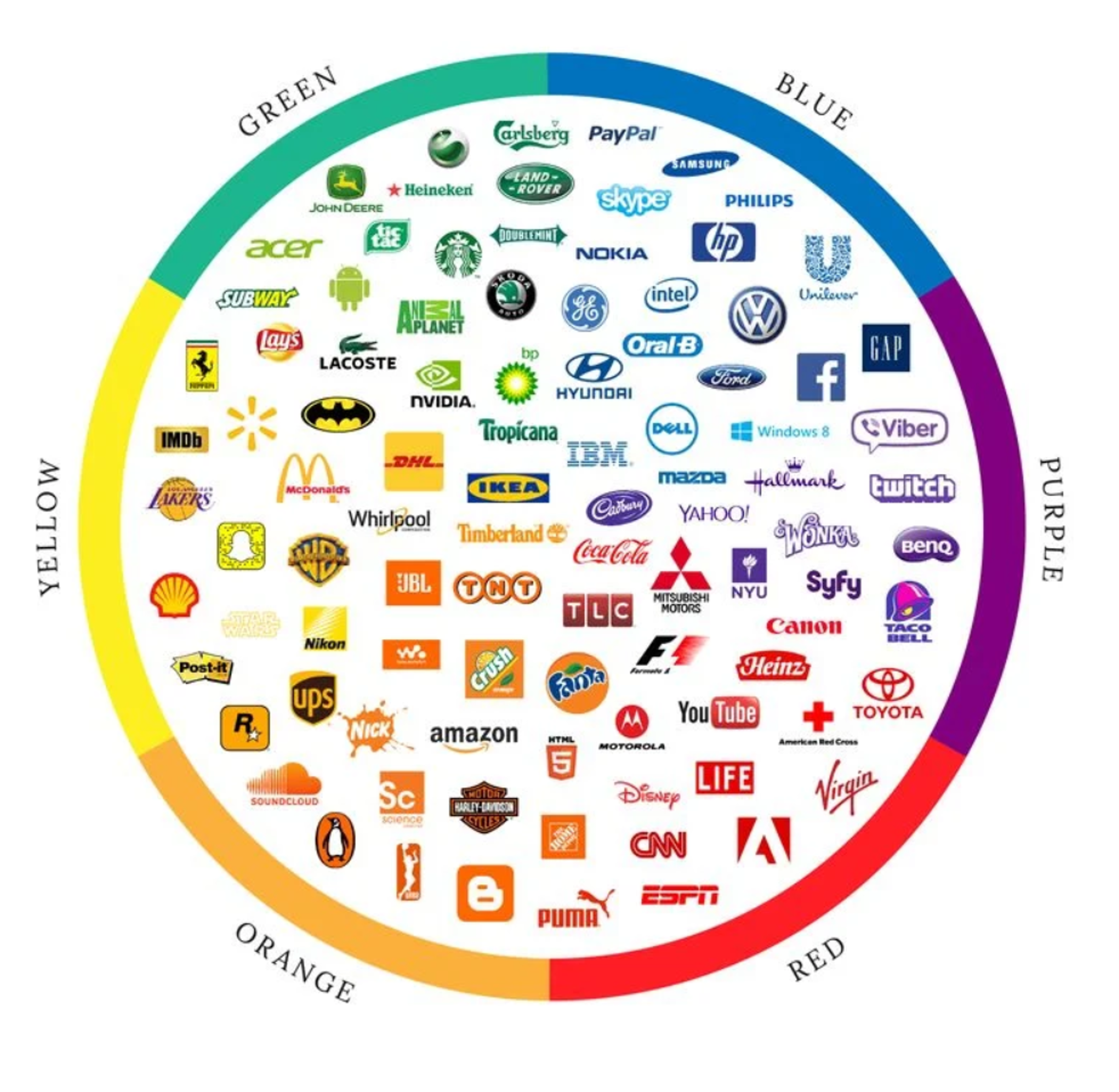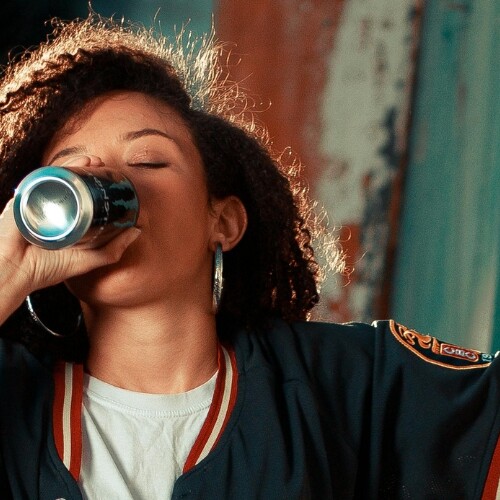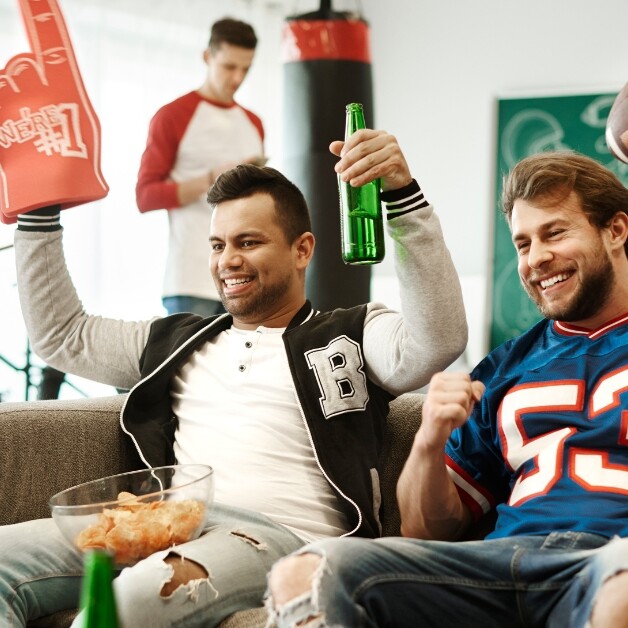Colors Create Emotional Connections with People That Can Improve Brand Recognition, Shape Customer Experiences and Influence Purchasing Decisions.
The Power of Color
Most purchasing decisions are influenced by shoppers emotions and perceptions, and color can differentiate brands, influence how people feel and shape the way consumers shop.

How Can Colors Differentiate Brands?
The way people perceive color is a big deal when it comes to marketing and branding. Color captures people’s attention, and enables the human mind to interpret information quickly and make subconscious decisions.
Studies have found particular hues and color combinations can shape the way people act and feel about brands, and influence purchasing decisions. Consumer research can explain the actions, emotions, characteristics and personality traits people associate with colors.
The wavelength, intensity and brightness of colors can arouse different feelings, moods and memories. Studies have found societal and cultural influences shape color associations, and some research indicates age and gender can also affect the way people perceive color.
Sources: Journal of the Academy of Marketing Science, Journal of Business Management | University of Loyola, Maryland, University of Southern California, Color Psychology in Marketing
In recent Qualitative Shop Alongs, clients have noted that they gravitate towards the Horizon Brand as it “pops” out at them from the shelf because of the color of the packaging. One consumer noted, “…the first one you see when you walk up to the shelf.”
People around the world have similar reactions to warm and cool hues, and societal and cultural influences tend to shape the meanings people associate with individual colors.
WARM HUES
Arouse emotional reactions and inspire physical activity around the world, but individual colors may convey very different meanings geographically.
COOL AND NEUTRAL TONES
Tend to be associated with human characteristics and trigger mental reactions universally, but individual colors may convey different meanings geographically.

Sources: Journal of the Academy of Marketing Science, Journal of Business Management, Color Psychology in Marketing
How Do People Experience Color?
When it comes to marketing, package design and retail environments, colors speak volumes. Even though people initially perceive color visually, our minds associate certain colors with memories of places, fragrances and flavors.
Studies have found people are drawn to places and brands that use color to tell the right story and create a sensory experience. Neurologists have discovered a few universal color associations that may be hardwired into the human brain. However,most color cues are based on cultural influences and memories of experiences like eating, cooking or traveling.

Sources: Harvard Brain Science Initiative, The National Institutes of Health, Plos One: Cross-Cultural Odor Associations, Medical Daily
Which Colors Do People Love?
First impressions matter, and color is one of the most influential factors when it comes to consumer perceptions. Studies have found personal color preferences tend to be shaped by cultural backgrounds, societal influences, gender, and generational color trends.
Color intensity and lighting changes the appearance and perception of color, and some research suggests men and women may actually see wavelengths differently. Men tend to prefer bold, bright colors with black or blue undertones, while women are more likely to respond to colors with less intense pigmentation or colors with white undertones.
Sources: COLORCOM Pantone Color Institute, LIVESCIENCE | University of Maryland, Color Psychology In Marketing
Panatone regularly forecasts color trends impacting a wide spectrum of industries. For example, London Fashion Week Spring/Summer 2022 colors are:
- Cascade, is connected to cleansing waters, cools and refreshes
- Coral Rose, a floral tone whose energizing presence brings a sense of excitement
- Super Sonic, electric in intensity
- Popcorn, a bright and cheery yellow hue that radiates warmth to all who embrace it
- Potpourri, a lighthearted and carefree fresh pastel pink
- Bubblegum, sends a message of playfulness and positivity
- Sudan Brown, a naturally rich earth-baked brown tied to the great outdoors
- Fragile Sprout, sharp and acidic, visually arresting
- Orchid Bloom, reminiscent of our heightened love for nature’s florals
- Coffee Quartz, a Flavorful brown that touches on both the basic and the glamorous

Source:Pantone Color Institute
Learning How People Actually Feel About ColorEven though most people will say price and quality drive their purchasing decisions, studies have found color is one of the primary factors influencing consumer behavior and purchasing decisions. Qualitative research enables people to explain what they can’t always say through a survey.
From telling a visual story, to establishing trust and influencing purchasing behavior, color selection is a critical strategic decision. In-depth interviews, group discussions and focus groups uncover the underlying factors that shape consumer perceptions and behavior.
Looking for Consumer Insights?
Insights In Marketing delivers in-depth and actionable insights so you can have every confidence your decisions are inspired by the consumer voice. Our team has decades of client and supplier side research experience, and our marketing expertise spans across various industries and consumer segments.
Want to Read More?
- 5 Tips for Successful Brand Positioning Using Quantitative Research
- Does Your Brand Align with Consumers’ Values?
- Does Your Brand’s Message Ring True with Today’s Consumer?
- How to Socialize Research Within Your Organization
Do you have a question or you’d like to see featured in an upcoming blog? We would love to hear from you! Please send questions and suggestions for blog topics to info@iimchicago.com.
Follow Insights in Marketing, LLC on LinkedIn, and join our mailing list to receive our consumer insights blog and quarterly newsletter. You’ll learn about evolving consumer values, lifestyle changes, demographic shifts and new buying behavior that can drive growth and innovation.
Share this article:
Related Resources
CPG in 2025: The Flavorful, Functional & Fan-Driven Future of Consumer Goods
The Consumer Packaged Goods (CPG) industry is undergoing a massive transformation, shaped by evolving consumer…
Sip, Sip, Hooray!
Sip, Sip, Hooray! The RTD Cocktail Craze and the Mocktail MovementThere’s something special about a perfectly…
From Idea to Icon: The Life Cycle of a Super Bowl Ad
From Idea to Icon: The Life Cycle of a Super Bowl AdA…
Seizing Business Opportunities in the GLP Era
While GLP medications disrupt traditional health and wellness models, they also present unique opportunities for…



